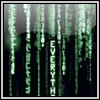
| Users Online Now: 1,660 (Who's On?) | Visitors Today: 524,262 | |
| Pageviews Today: 810,144 | Threads Today: 319 | Posts Today: 4,230 |
| 09:07 AM | ||
A scanning electron micrograph of a natural killer cell facing off against a larger cancer cell | |
| Anonymous Coward (OP) User ID: 77212955 04/14/2019 04:48 PM Report Abusive Post Report Copyright Violation | LOL... Who I think pinned this, go back to the guitar thread and look at the Canadian going ballistic. He is fun! Thread: A truly amazing guitarist. |
| Sacred Geometry User ID: 77558888 04/14/2019 05:43 PM Report Abusive Post Report Copyright Violation | Edit ~ David and Goliath [link to en.m.wikipedia.org (secure)] . Last Edited by Sacred Geometry on 04/14/2019 05:45 PM This is all about You. |
| Anonymous Coward User ID: 45993429 04/14/2019 06:15 PM Report Abusive Post Report Copyright Violation | Human body GcMAF is Gc - Vitamin D binding protein. MAF is macrophages activating factor. Adding GcMAF to blood of human with cancer will activate human immune response allowing macrophages to kill cancer. Proven effective in many studies. Clinical Experience of Integrative Cancer Immunotherapy with GcMAF [link to www.researchgate.net (secure)] |
| Anonymous Coward User ID: 45993429 04/14/2019 06:28 PM Report Abusive Post Report Copyright Violation | This link is the most comprehensive study proving GcMAF works to defeat cancer cells by activating macrophages. It includes slides and is public research data with PDF download for offline reading and sharing. [link to www.ncbi.nlm.nih.gov (secure)] Less than 50 percent rule applied. 33 page study. A Novel Role for a Major Component of the Vitamin D Axis: Vitamin D Binding Protein-Derived Macrophage Activating Factor Induces Human Breast Cancer Cell Apoptosis through Stimulation of Macrophages A Novel Role for a Major Component of the Vitamin D Axis: Vitamin D Binding Protein-Derived Macrophage Activating Factor Induces Human Breast Cancer Cell Apoptosis through Stimulation of Macrophages Lynda Thyer, Emma Ward, [...], and Stefania Pacini Additional article information Abstract The role of vitamin D in maintaining health appears greater than originally thought, and the concept of the vitamin D axis underlines the complexity of the biological events controlled by biologically active vitamin D (1,25(OH)(2)D3), its two binding proteins that are the vitamin D receptor (VDR) and the vitamin D-binding protein-derived macrophage activating factor (GcMAF). In this study we demonstrate that GcMAF stimulates macrophages, which in turn attack human breast cancer cells, induce their apoptosis and eventually phagocytize them. These results are consistent with the observation that macrophages infiltrated implanted tumors in mice after GcMAF injections. In addition, we hypothesize that the last 23 hydrophobic amino acids of VDR, located at the inner part of the plasma membrane, interact with the first 23 hydrophobic amino acids of the GcMAF located at the external part of the plasma membrane. This al1ows 1,25(OH)(2)D3 and oleic acid to become sandwiched between the two vitamin D-binding proteins, thus postulating a novel molecular mode of interaction between GcMAF and VDR. Taken together, these results support and reinforce the hypothesis that GcMAF has multiple biological activities that could be responsible for its anti-cancer effects, possibly through molecular interaction with the VDR that in turn is responsible for a multitude of non-genomic as well as genomic effects. Keywords: vitamin D, macrophages, breast cancer, human, apoptosis 1. Introduction The so-called vitamin D axis is involved in various aspects of human breast cancer, the most common human tumor. The vitamin D axis is composed of the biologically active form of vitamin D (1,25(OH)(2)D3), and by two proteins that specifically bind it. These proteins are the vitamin D receptor (VDR) and the vitamin D binding protein that is the precursor of the vitamin D binding protein-derived macrophage activating factor, also termed GcMAF [1]. The role of vitamin D in human breast cancer is witnessed by the number of studies that have been published on the subject [2]. More intriguing, however, is the relative lack of information about GcMAF and human breast cancer; in fact, in the peer-reviewed literature, as of today (May 2013), there are only four studies on this subject. In two of these studies, the effects of GcMAF were observed on the human breast cancer cell line MCF-7 in vitro [3,4]. Another study examined the glycosylation status of vitamin D binding protein in cancer patients including breast cancer patients [5], whereas a less recent study reported the effects of administering GcMAF to metastatic breast cancer patients [6]. It is interesting to notice that no studies have, so far, been performed in order to assess whether GcMAF, which is a known powerful activator of macrophages, was indeed capable of activating macrophages that could in turn “attack” human breast cancer cells. There is indirect evidence suggesting that GcMAF activates macrophages that infiltrate experimental tumors in animal models [7,8]. This evidence, however, is indirect and, most important, refers to experimental tumors other than human breast cancer. In addition, since the observations quoted above were performed in experimental animals, the presence of confounding factors associated with the complexity of the responses of the whole organism to the presence of transplanted or advanced tumors, limits the possibility of interpretation of the presented results. Therefore, in order to fill this gap of knowledge, we performed experiments to provide clear-cut evidence that GcMAF, as part of the vitamin D axis, activates normal macrophages that in turn exert a tumoricidal action against human breast cancer cells without the presence of confounding factors. 2. Experimental Section Purified, activity-tested GcMAF was obtained from Immuno Biotech Ltd., Guernsey, Channel Islands. Paricalcitol was from Abbott, Roma, Italy. All other reagents were from Sigma Aldrich, Milano, Italy. 2.1. Cell Lines Human breast cancer cells (cell line MCF-7) were obtained from the Istituto Zooprofilattico Sperimentale della Lombardia e dell’Emilia-Romagna, Brescia, Italy. Cells were routinely maintained at 37 °C in a humidified atmosphere of 5% CO2 in Eagle’s minimum essential medium in Earle’s Balanced salt solution, supplemented with 1 mM sodium pyruvate, 10% fetal bovine serum (FBS), 100 U/mL penicillin, and 100 µg/mL streptomycin (Invitrogen, Carlsbad, CA, USA). No 1,25(OH)(2)D3 was present in the culture medium. In experiments of co-cultures, macrophages (cell line Raw 264.7, HPA Culture Collection) were activated by culturing them in the same medium of MCF-7 cells and in the presence of 100 ng/mL GcMAF for 72 h prior to addition to the MCF-7 cell culture. GcMAF concentration was established by preliminary experiments showing a linear dose-response curve. The initial response was observed at 1 ng/mL and a plateau was reached at 100 ng/mL. These concentrations were consistent with the results previously reported [3,4]. Before addition to the MCF-7 cell culture, the macrophages were gently centrifuged and re-suspended in fresh medium in order to avoid transferring GcMAF to the co-culture. In this way, we could rule out direct effects of GcMAF on MCF-7 cells. The macrophages were added at a ratio of 1:1 to the MCF-7 cell culture. The cells were then allowed to settle for 1 h before time-lapse photography. Photography was taken over a 7-day period using an Olympus CK2 microscope and a GXCAM-3 with NCH Debut capture software. In the experiments described in Figure 1A, Figure 2, the cells were fixed and stained as described below 40 h after co-culturing them. Figure 1 Figure 1 (A) Haematoxylin-eosin staining (magnification 300×); in the absence of GcMAF, small macrophages do not appear to interact with MCF-7 human breast cancer cells. The picture refers to 40 h co-culture. (B) Phase contrast microphotography (300×) ... Figure 2 Figure 2 Co-culture of GcMAF-activated macrophages and human breast cancer cells; Papanicolau staining. (A) Cancer cells in the center are surrounded by hundreds of small macrophages (100×). (B) One human breast cancer cell is completely surrounded by ... 2.2. Study of Cell Morphology Cell morphology was studied by phase-contrast microscopy using an Optika inverted microscope (Model XDS-2; Optika Microscopes, Bergamo, Italy). This microscope had a positive-phase plate for phase-contrast imaging below a long working distance condenser lens, and an 8 Mp digital camera with LCD Screen (Optika Microscopes, Bergamo, Italy). The light source was a 6 V/30 W halogen pre-centered illuminator, with adjustable intensity. Phase-contrast imaging was performed on living cells without any fixation or treatment. A series of digital images of living cells were recorded for each experimental point and the most representative were chosen. Haematoxylin-eosin and Papanicolaou staining were also performed. This last staining results in very transparent cells, such that even thicker specimens with overlapping cells could be recorded. Briefly, cells were stained with Harris haematoxylin as nuclear stain. Orange G and EA-65 (Light Green, Bismarck Brown, and Eosin) were used for cytoplasmic staining (Sigma Aldrich, Milano, Italy). Slides were mounted with permanent mounting medium and observed under light microscopy (Nikon Instruments SpA, Milano, Italy). Pictures shown are representative of typical experimental data. Each experiment was performed with quadrupled samples and was replicated three times. 2.3. Study of Cell Proliferation Assessment of cell proliferation was determined by a Calbiochem Rapid Cell Proliferation Kit (Calbiochem, D.B.A., Milano, Italy) [9]. Each condition was replicated with quadrupled samples and each experiment was replicated three times. Differences between experimental values were evaluated by the Student’s t-test. 2.4. Study of Amino Acid Alignments and Functions Analyses were carried out on the nucleotide and amino-acid sequences of the genes coding for vitamin D binding protein/GcMAF (isoform 1 precursor; gi|324021743|ref|NP_001191235.1) and VDR (gi|38511972|gb|AAH60832.1) in Homo sapiens. In reference to the protein alignments, three parameters have been taken into account: sequence identity sequence similarity hydrophobic profile These criteria were evaluated because they determine the quality of the alignments. In addition, we evaluated the functional value of the amino acids replaced, i.e., the importance that any divergence assumes within the sequence. The values obtained have allowed the scores to be added, rather than multiplied, in the global calculation of alignment scores. Information concerning the selected genes was obtained from the database at the University of California, Santa Cruz [10] referring to the latest published version of the human genome [11]. In particular, we used the table refGene, containing all gene coding and non-coding for proteins. In this way, it was possible to obtain detailed information on human genes, such as: chromosome, position of the start and the end of transcription, position of the start and the end of coding part, and the number and the positions of exons. The annotations for the genes were obtained using the algorithm liftOver [12]. The presence of conserved elements within the alignment was verified by using the information contained in the phastConsElements28way table of the UCSC database. This table contains the predictions of conserved elements produced by the phastCons program. The positions were reported on the alignment. All operations, from the search of genomic information to the creation of the alignments, were made using R Statistical Mathematical Software. Once the sequences were aligned, the columns of residues were taken into consideration. Any lined-up residue is to be considered implicitly related to evolution. The hydrophobic profile was obtained using software on the website [13]. Among the several systems that can be used for the calculation of the index of the amino acid sequence hydrophobicity/hydrophilicity, we selected the Kyte and Doolittle’s method [14]. The three-dimensional protein structures of vitamin D-binding protein and VDR were obtained through the use of the PDB archive [15]. Superposition between the two structures was possible through the use of the Swiss Pdb Viewer software [16]. The PDB archive contains information about experimentally-determined structures of proteins, nucleic acids, and complex assemblies. SwissPdb Viewer is an application that provides an interface allowing analysis of several proteins at the same time. The proteins can be superimposed in order to deduce structural alignments and compare their active sites or any other relevant parts. Amino acid mutations, H-bonds, angles, and distances between atoms are easy to obtain thanks to the intuitive graphic and menu interface. 3. Results When co-cultured with human breast cancer cells in the absence of GcMAF, macrophages did not interact with human breast cancer cells and their characteristically irregular morphology was maintained (Figure 1A). Little or no vacuoles could be observed in macrophage cytoplasm, indirect evidence of a lack of activation. As described before, human breast cancer cells exhibited their typically non-homogeneous morphology, with some cells larger than other. The morphology of the cells was irregularly polygonal. As expected, human breast cancer cells tended to grow, one on top of the other, forming clusters that reflected the characteristic loss of contact inhibition. Figure 1B depicts phase contrast microphotography of a cluster of human breast cancer cells cultured in the absence of macrophages or any other addition. Cancer cells are visible as cords of cells growing in multi-layers in the center of the Figure. At higher magnification (Figure 1C), the cells appeared densely packed, with linear, non-fragmented, margins, and with a clearly recognizable organization of chromatin inside the nucleus, indicating a strong synthetic activity compatible with the high rate of proliferation of these cells. The nucleoli are clearly visible. Figure 1D, shows Papanicolau staining of only human breast cancer cells; a significant cluster can be observed in the left lower side of the image. The nuclei appear heavily stained as expected in growing cancer cells. The perimeter of the cells is linear with no indents or signs of fragmentation. Empty (white) areas in the well are also clearly observable. These represent naked areas of the plastic well that reflect the loss of adherence typical of cancer cells. Loss of adherence is a pre-requisite for cellular detachment, invasiveness, and metastatic potential. However, when human breast cancer cells were co-cultured with macrophages that had been previously activated by GcMAF (100 ng/mL) for 72 h, the picture was completely different as shown in Figure 2, Figure 3. The pictures show co-culture of GcMAF-activated macrophages and human breast cancer cells after 40 h incubation. GcMAF-activated macrophages appeared as small cells that surrounded human breast cancer cells. Figure 2A (Papanicolau staining,) clearly shows a group of human breast cancer cell in the center of the image surrounded by hundreds of small macrophages. At higher magnification, (Figure 2B) one human breast cancer cell appears completely surrounded by macrophages that are also observable on top of the cell. The nucleus of the macrophages is well stained, whereas the chromatin in the nucleus of the cancer cell appears fragmented and disorganized. The nucleoli, however, are still recognizable; this phenomenon can be interpreted as an index of remaining synthetic activity as expected in cells undergoing active apoptosis. The cytoplasm of macrophages appears vacuolated thus suggesting active phagocytosis. Figure 2C shows another field where two large human breast cancer cells are surrounded by GcMAF-activated macrophages that appear to emit cytoplasmic extrusions that search for contact with the membrane of cancer cells. The cell in the center of Figure 2C, at higher magnification (Figure 2D), shows a peculiar aspect; the chromatin in the nucleus appears fragmented and, in the lower right corner, the cytoplasm appears to be indented as if the two macrophages in that region were actively deconstructing the cytoplasmic assembly of the cancer cell. A similar phenomenon can be observed on the left where two macrophages indent the cytoplasmic profile of the cancer cell. Figure 3 Figure 3 Phase contrast microphotography from time-lapse recording of co-culture of GcMAF-activated macrophages and human breast cancer cells. (A) Day one of co-culture; the cancer cells form an irregular layer. Individual cancer cells can be recognized. GcMAF-activated ... It is worth noticing that all these morphological changes are consistent with the induction of apoptosis of human breast cancer cells by activated macrophages [17]. In particular, some of the morphological changes were consistent with the early phases of apoptosis and the morphology of the nucleus of human breast cancer cells shown in Figure 2 is almost superimposable to that represented in Figure 1 (left panel) of Hacker, 2000 [17]. Even the changes in the morphology of the cytoplasm were consistent with the induction of apoptosis by GcMAF-activated macrophages and the cytoplasm of human breast cancer cells showed the typical pattern of disintegration that precedes the formation of apoptotic bodies. In addition, in this case, the morphology of the cytoplasm of the cancer cells appears remarkably similar to that presented in Figure 1 (middle panel) of Hacker, 2000 [17]. Although the morphological features observed here are suggestive of active apoptosis, further studies using ELISA tests to quantify the level of human active caspase-3 protein, the major executioner protease in apoptosis, will determine quantitatively the degree of apoptosis induced by GcMAF-activated macrophages. Time-lapse micro-photography shows that after about seven days of co-culture of GcMAF-activated macrophages with human breast cancer cells, the irregular growth of the breast carcinoma cells was arrested and the large protruding cell biomass was reduced. Figure 3A shows the human breast cancer cells and the GcMAF-activated macrophages at day one; the cancer cells, as expected, form an irregular layer that covers the field of observation. Individual cancer cells can be recognized as well as the naked areas of the plate as described above. GcMAF-activated macrophages appear as small cells that are attached to the cancer cells, in most cases, above them. It is interesting to notice that almost no macrophages can be observed in the naked areas of the plate, thus confirming the observation that GcMAF-activated macrophages seek for contact with the cancer cells. After seven days of co-incubation (Figure 3B), no individual cancer cell can be recognized. After macrophage-induced apoptosis, their apoptotic bodies are all grouped together in the center of the field of observation, and most of the field is empty of cancer cells. Most GcMAF-activated macrophages surround and infiltrate the mass of cancer cell debris in the center. Taken together these results demonstrate for the first time that GcMAF-activated macrophages induce human breast cancer cell apoptosis and the subsequent reduction of the cancer cell mass following phagocytosis of apoptotic cancer cells by macrophages. 4. Discussion It is long considered that the role of vitamin D in maintaining health is much greater than originally supposed. The emergence of the concept of the vitamin D axis [1,19] further underlines the complexity of the biological events controlled by 1,25(OH)(2)D3 through its two binding proteins (VDR and vitamin D-binding protein/GcMAF) that interfere with a growing number of events at the cellular and molecular level. In this study we focused our attention on the product of deglycosylation of the vitamin D-binding protein that is GcMAF, probably one of the most potent macrophage activators so far discovered [20]. Our results demonstrate that GcMAF stimulates macrophages that in turn attack human breast cancer cells, possibly induce their apoptosis and eventually phagocytise them. These results are consistent with the observation that macrophages infiltrated experimental tumors implanted in severely immunodeficient mice after GcMAF injections. |
| Anonymous Coward User ID: 45993429 04/14/2019 06:42 PM Report Abusive Post Report Copyright Violation | That was not supposed to be that much.. This link is the most comprehensive study proving GcMAF works to defeat cancer cells by activating macrophages. It includes slides and is public research data with PDF download for offline reading and sharing. [link to www.ncbi.nlm.nih.gov (secure)] Less than 50 percent rule applied. 33 page study. A Novel Role for a Major Component of the Vitamin D Axis: Vitamin D Binding Protein-Derived Macrophage Activating Factor Induces Human Breast Cancer Cell Apoptosis through Stimulation of Macrophages "Time-lapse micro-photography shows that after about seven days of co-culture of GcMAF-activated macrophages with human breast cancer cells, the irregular growth of the breast carcinoma cells was arrested and the large protruding cell biomass was reduced. It is interesting to notice that almost no macrophages can be observed in the naked areas of the plate, thus confirming the observation that GcMAF-activated macrophages seek for contact with the cancer cells. After seven days of co-incubation (Figure 3B), no individual cancer cell can be recognized. After macrophage-induced apoptosis, their apoptotic bodies are all grouped together in the center of the field of observation, and most of the field is empty of cancer cells. Most GcMAF-activated macrophages surround and infiltrate the mass of cancer cell debris in the center. Taken together these results demonstrate for the first time that GcMAF-activated macrophages induce human breast cancer cell apoptosis and the subsequent reduction of the cancer cell mass following phagocytosis of apoptotic cancer cells by macrophages. 4. Discussion It is long considered that the role of vitamin D in maintaining health is much greater than originally supposed. The emergence of the concept of the vitamin D axis [1,19] further underlines the complexity of the biological events controlled by 1,25(OH)(2)D3 through its two binding proteins (VDR and vitamin D-binding protein/GcMAF) that interfere with a growing number of events at the cellular and molecular level. In this study we focused our attention on the product of deglycosylation of the vitamin D-binding protein that is GcMAF, probably one of the most potent macrophage activators so far discovered [20]. Our results demonstrate that GcMAF stimulates macrophages that in turn attack human breast cancer cells, possibly induce their apoptosis and eventually phagocytise them. These results are consistent with the observation that macrophages infiltrated experimental tumors implanted in severely immunodeficient mice after GcMAF injections. |
| zosar999 User ID: 77544091 04/14/2019 06:48 PM Report Abusive Post Report Copyright Violation | |
| Anonymous Coward User ID: 45993429 04/14/2019 07:09 PM Report Abusive Post Report Copyright Violation | |
| Anonymous Coward User ID: 70067003 04/14/2019 09:19 PM Report Abusive Post Report Copyright Violation | |
| Big Duke6 User ID: 77558146 04/14/2019 10:30 PM  Report Abusive Post Report Copyright Violation | |
| Anonymous Coward User ID: 48024189 04/14/2019 11:05 PM Report Abusive Post Report Copyright Violation | |
| Simple27 User ID: 40488826 04/14/2019 11:44 PM  Report Abusive Post Report Copyright Violation | |
| Anonymous Coward User ID: 45993429 04/15/2019 01:06 AM Report Abusive Post Report Copyright Violation | |
| Anonymous Coward User ID: 45993429 04/15/2019 01:07 AM Report Abusive Post Report Copyright Violation | |
| Anonymous Coward User ID: 45993429 04/15/2019 01:11 AM Report Abusive Post Report Copyright Violation | |
| Isis One User ID: 76795039 04/15/2019 02:14 AM  Report Abusive Post Report Copyright Violation | Impressive! Spread the word, change the collective conscious...... THERE IS MORE THAN ENOUGH OF EVERYTHING TO GO AROUND When you are undisciplined, the universe is extremely forgiving and when you are disciplined, the universe is extremely generous. Me One doesn't discover new lands without consenting to lose sight, for a very long time, of the shore. Andre Gide [link to www.godlikeproductions.com] |
| Anonymous Coward User ID: 56183017 04/15/2019 03:32 AM Report Abusive Post Report Copyright Violation | |
| CitizenPerth User ID: 77557469 04/15/2019 04:57 AM Report Abusive Post Report Copyright Violation | Quoting: Anonymous Coward 45993429  It's life as we know it, but only just. [link to citizenperth.wordpress.com] sic ut vos es vos should exsisto , denego alius vicis facio vos change , exsisto youself , proprie |
